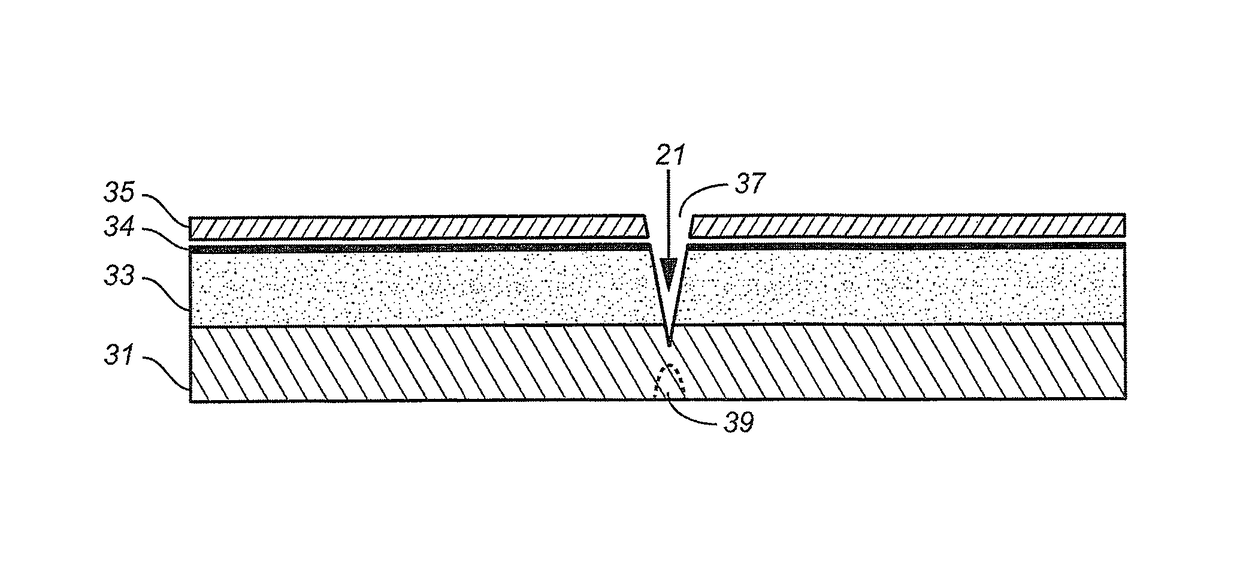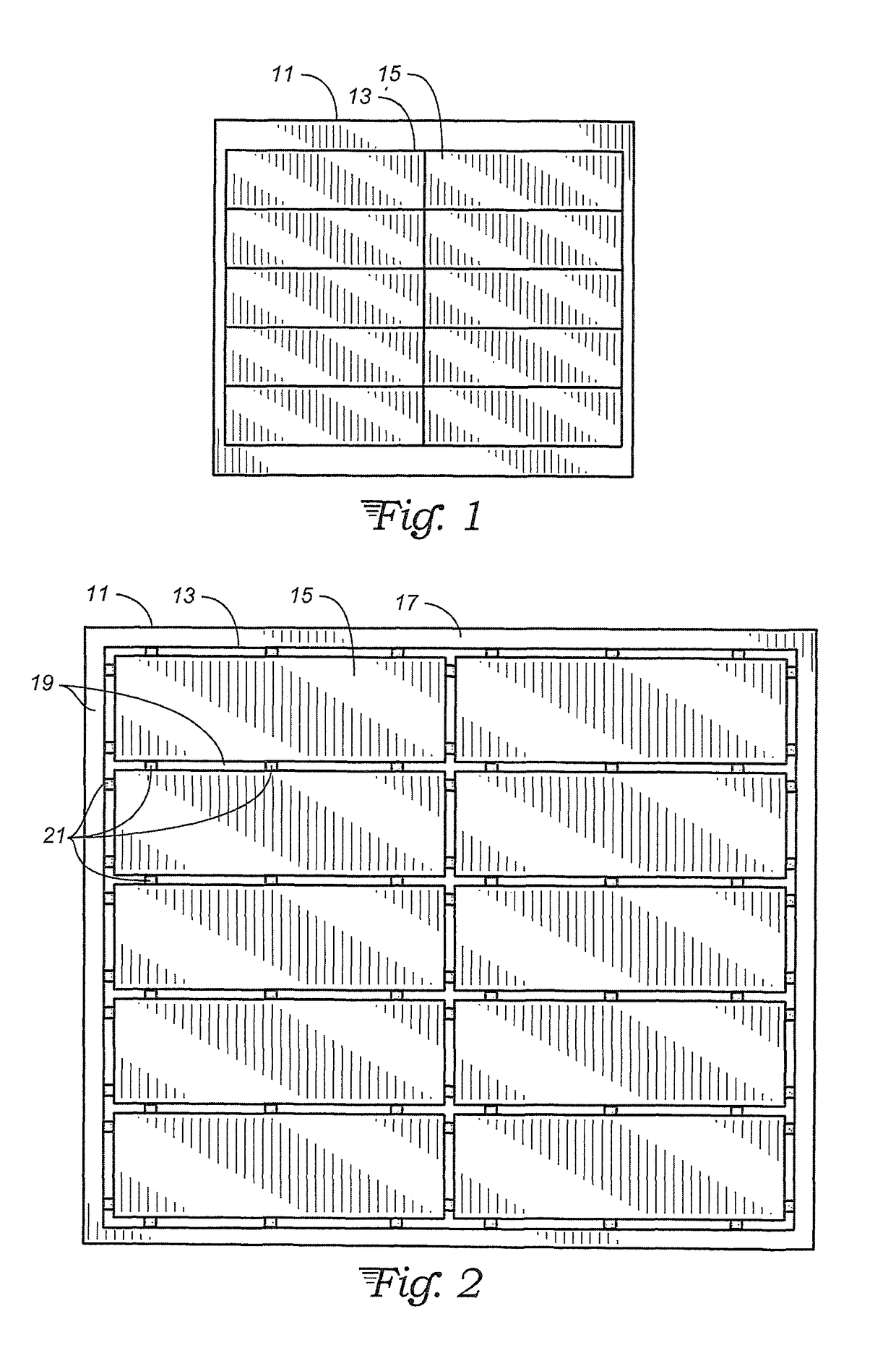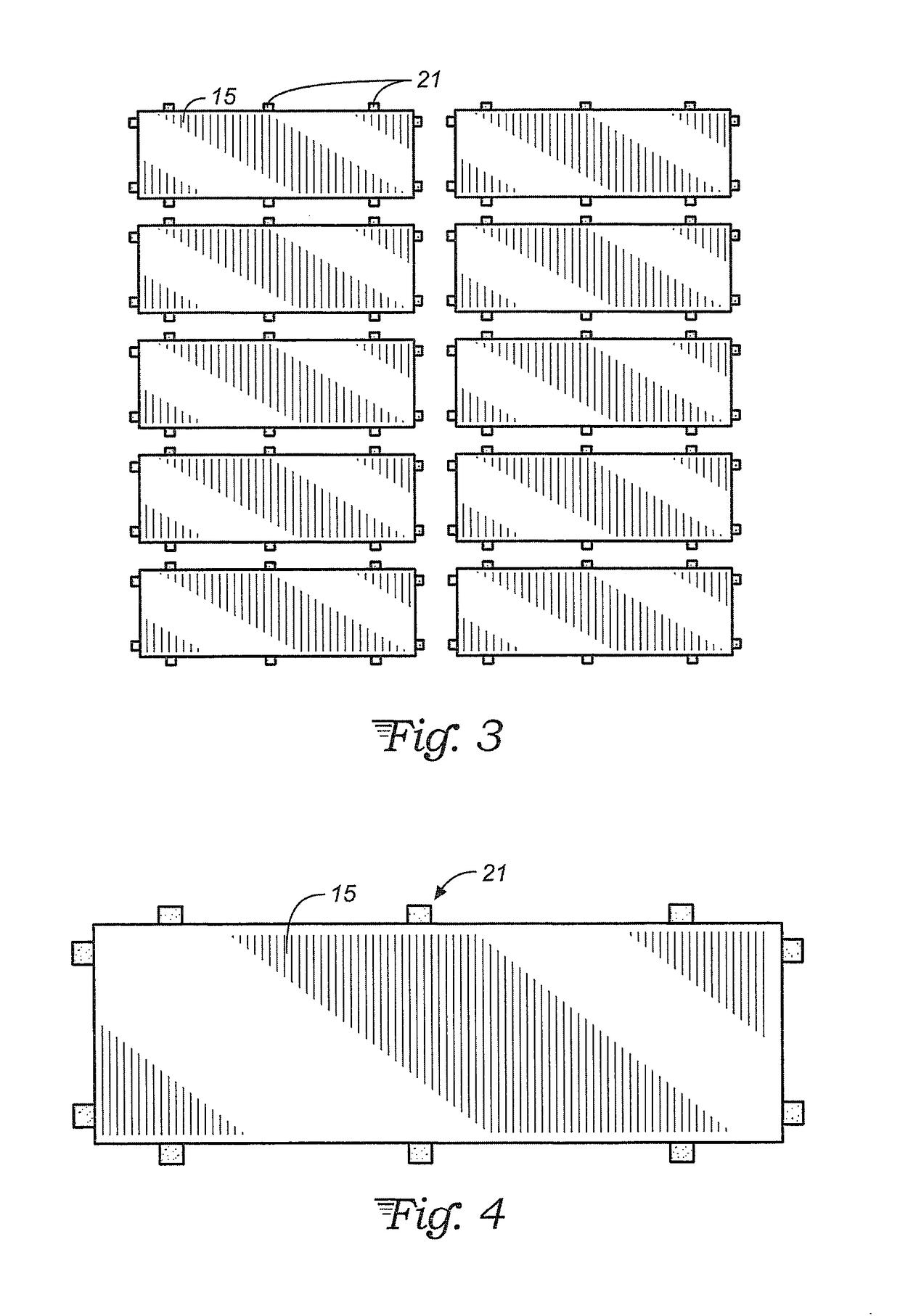Perforation of films for separation
a technology of perforation and film, applied in the direction of semiconductor devices, semiconductor/solid-state device details, electrical devices, etc., can solve the problems of subsequent cell-level handling and processing of expensive additional tooling, and achieve the effects of high reliability of cutting and separation process, easy pulling apart, and balanced holding strength
- Summary
- Abstract
- Description
- Claims
- Application Information
AI Technical Summary
Benefits of technology
Problems solved by technology
Method used
Image
Examples
Embodiment Construction
[0012]With reference to FIG. 1, a film of material on a frame assembly 11 is seen in its state prior to any laser or mechanical separation. As seen in FIG. 5, tiles 13 may be a multi-layer composite of a thin semiconductor film 35, approximately 1 to 20 microns thick, that is supported by a polymer sheet 31, such as one composed of polyethylene terephthalate (PET), approximately 25 to 100 microns thick. A copper base 34 of the semiconductor film 35 may be bonded to the PET sheet 31 by an approximately 25 to 100 micron thick layer of an adhesive (PSA) 33. Returning to FIG. 1, tiles of material 13, e.g. of approximately 100 mm×100 mm size, can be created this way and patterned with a number of individual cells 15. The individual cells 15 must ultimately be separated from one another in order to sort them according to quality. A repeatable, accurate, fast, low cost method to free (separate) the cells would be very attractive.
[0013]With reference to FIG. 2, the method would include the ...
PUM
 Login to View More
Login to View More Abstract
Description
Claims
Application Information
 Login to View More
Login to View More - R&D
- Intellectual Property
- Life Sciences
- Materials
- Tech Scout
- Unparalleled Data Quality
- Higher Quality Content
- 60% Fewer Hallucinations
Browse by: Latest US Patents, China's latest patents, Technical Efficacy Thesaurus, Application Domain, Technology Topic, Popular Technical Reports.
© 2025 PatSnap. All rights reserved.Legal|Privacy policy|Modern Slavery Act Transparency Statement|Sitemap|About US| Contact US: help@patsnap.com



